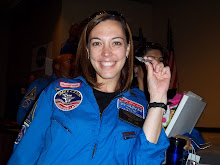 |
| http://mitocw.udsm.ac.tz/NR/rdonlyres/Global/2/2BDCF7AB-1F3A-42C3-A57A-99B7678E2FC5/0/chp_chess_game.jpg |
The National Educational Technology Standards (NETS) for teachers and students are very closely aligned, such that having a teacher design a lesson that incorporates these technology standards, allows for students to fulfill their standards by following through with the lesson to its completion. For example, there are 5 teacher (T) standards and 6 student (S) standards and, while they do not match up word-for-word, they do weave together rather tightly. It requires that each classroom participant know what they technology standards are, and be committed to doing their best to accomplishing them…students AND teacher alike.
In setting my goals for this class, I determined that there were two specific NETS-T standards/indicators that I needed more work in to become more confident in implementing. One of these was NETS-T 2b, which states that teachers “develop technology-enriched learning environments that enable all students to pursue their individual curiosities and become active participants in setting their own educational goals, managing their own learning, and assessing their own progress.” In designing lessons that fulfill this goal as an educator, I am providing an opportunity for my students to fulfill NETS-S 1b, which states that students “create original works as a means of personal or group expression,” and 4b, which states that students “plan and manage activities to develop a solution or complete a project.”
As I said before, in order to accomplish these goals and fulfill these standards, all participants must be on-board. This means I, as the teacher, can help my students learn the GAME plan process for their own learning activities. I have always wanted to help my students set goals for themselves and this is a great way for them to do so and monitor their own progress. After setting their goals, they will need to be directed to decide what action to take in accomplishing their goals, and then they will need reflection time over time to both monitor their learning and evaluate their progress. If they find that they are not on the track toward accomplishing their goals, like they thought they would be, they must re-evaluate the plan and modify it (Cennamo et. al., 2010). This is something that can be done globally in a school, at the beginning of the year, or something that one teacher can teach students to do in a class, for multiple long-term assignments.
References:
Cennamo, K., Ross, J., & Ertmer, P. (2010). Technology integration for meaningful classroom use: A standards-based approach. Belmont, CA: Wadsworth, Cengage Learning.
National Educational Technology Standards found at http://www.iste.org/AM/Template.cfm?Section=NETS on August 10, 2010.





Holly,
ReplyDeleteIt seems that most of us realize that the standards for technology for both teachers and students are closely intertwined. This comes as no real surprise to me. I completely agree with you that both teachers and students need to be committed to accomplishing the goal. What a great idea to develop your own game plan and then teach your students the process. It makes perfect sense that if we need to set goals and monitor them, so do our students. It is a skill that they will continue to use no matter what profession they choose.
The idea of creating individualized works can be somewhat challenging from me due to some of the restraints of certain areas of content. I noticed on someone's post that they would have their students create a commercial or infomercial for various content areas. I think this is a good way allowing students to develop there own content.
ReplyDelete